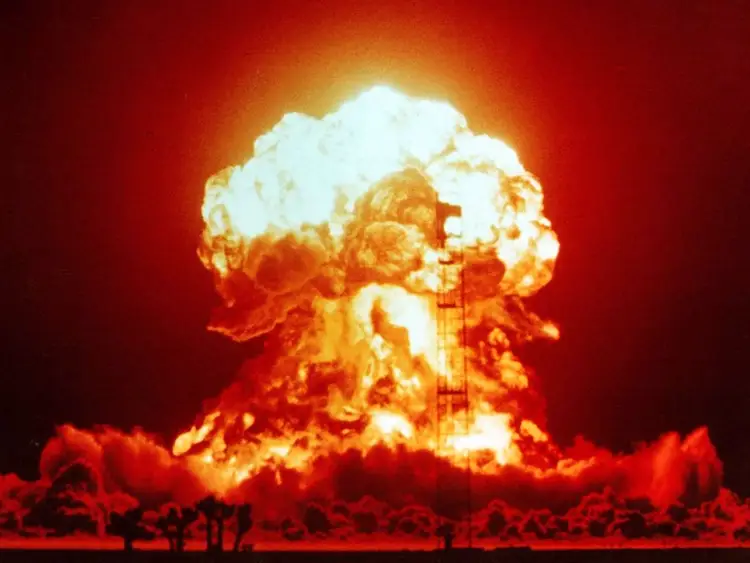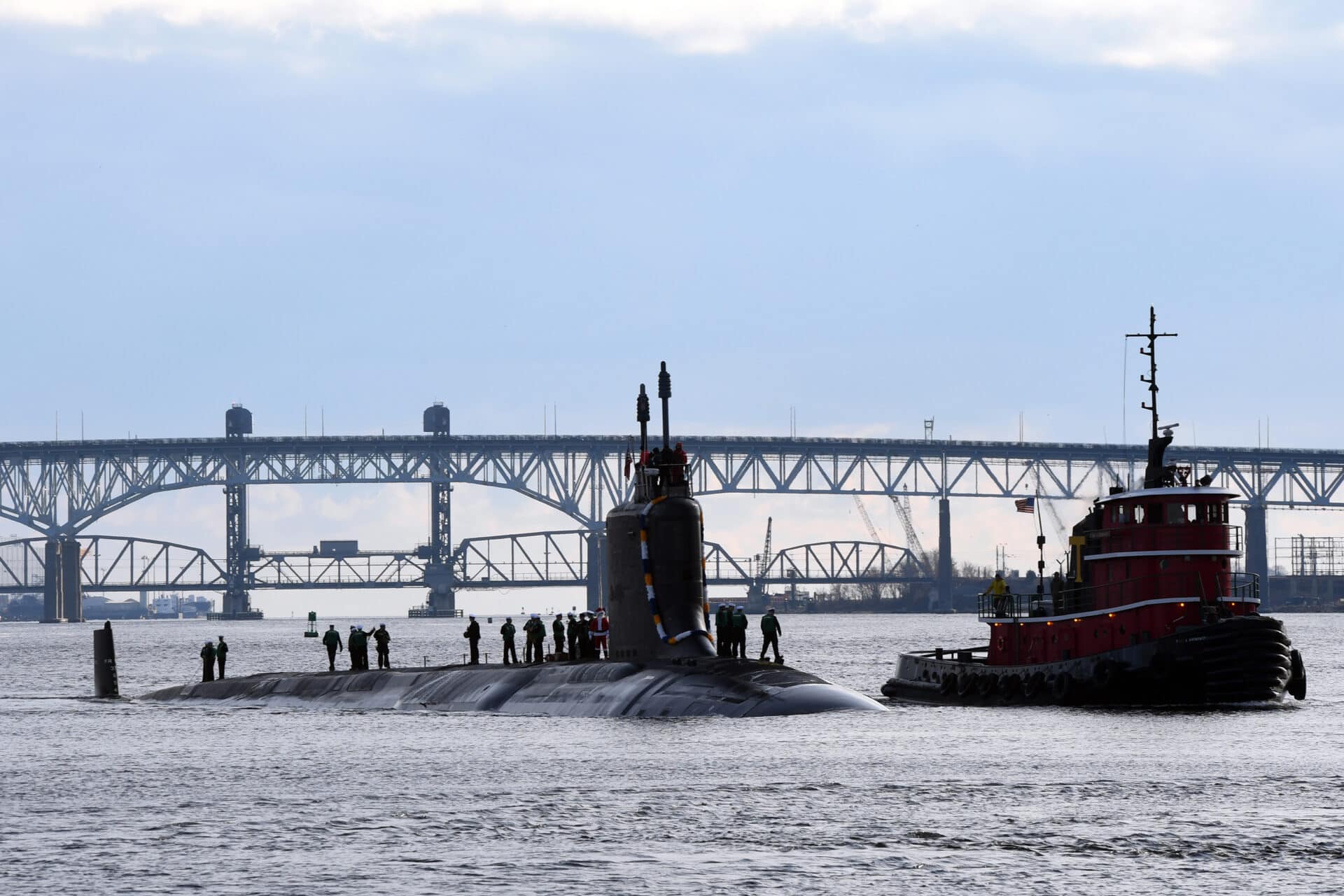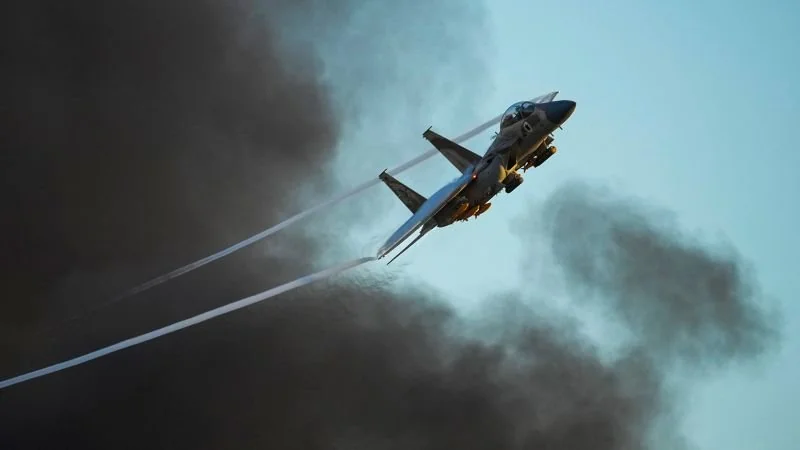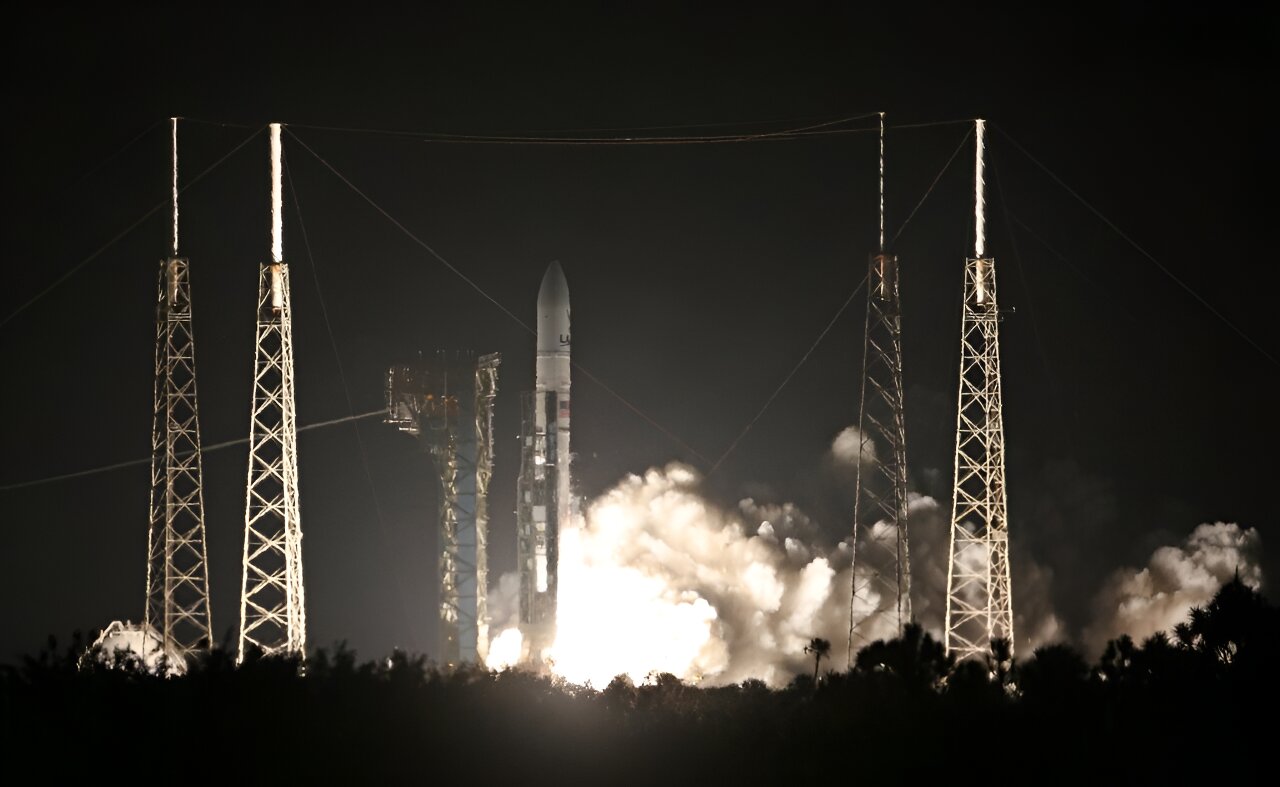The current global situation, which includes a lethal conflict in the Middle East, Russia’s ongoing invasion of Ukraine, and China on the verge of invading Taiwan, maybe the closest the world has come to war in the past century.
However, experts warn that even though Americans are located on the opposite side of the world, they would not be safe from a nuclear conflict.
Russia possesses over 5,900 warheads, capable of penetrating the United States within thirty minutes. In addition, China maintains a stockpile of around 500 missiles aimed at the west coast of the country.
Fifteen cities, according to financial experts, would be top targets if a foreign adversary decided to initiate a nuclear campaign against the United States.
Due to factors such as evacuation ease, emergency preparedness, population density, and air distance to a strategic military facility, these areas are probable targets.
As the defense center of the United States, the nation’s capital was deemed the most valuable target, followed by New York, the largest metropolitan area, according to an analysis by 24/7 Wall Street, an independent financial news source.

Dr. Irwin Redlener, a professor at the Mailman School of Public Health at Columbia University, did the research utilized in the report.
Strategic Target Identification and Ranking
Redlener has previously identified six economic regions as potential targets of hostile nuclear weapons.
These locations were compiled with fifteen strategic military targets identified by Stephen Schwartz, co-author of ‘The Costs and Consequences of U.S. Nuclear Weapons Since 1940’ and a member of the Bulletin of Atomic Scientists.
Schwartz’s targets include the air force and submarine bases, command centers, and ICBM bases.
Then, 24/7 Wall Street members ranked each location according to the following criteria: evacuation ease, distance in miles to the strategic military target, emergency preparedness, and population density.
The group then detonated a one-megaton weapon using the nuclear detonation simulator Nukemap to observe the resulting destruction and casualties.
The intercontinental ballistic missile (ICBM) launch facilities (silos) situated in Colorado, Montana, Nebraska, North Dakota, and Wyoming are widely perceived by the American public as a target for an adversary.
Although this may be the case, adversarial nations may also consider the areas with the most destruction and casualties.
Alexandria-Washington-Washington
This region is the most difficult because it contains the White House, the U.S. government, and the Pentagon, which was the target of the September 11 assaults. It is also the epicenter of democracy.
Geographically situated among the 15 regions, this area boasts the fourth-greatest population, surpassing 6.1 million individuals.
The capital was deemed the fifth most hazardous among evacuation destinations by the experts, who also forecasted that an attack would result in over 924,000 injuries and over 461,000 fatalities.
Jersey City-Newark-New York City
It is not unexpected that Manhattan would be a target, given that it was also targeted during the September 11 assaults.
In addition to being the most populous metropolis in the United States, it represents capitalism and Western values.

A device detonated in New York City would have repercussions in Jersey City and Newark, both located in New Jersey across the Hudson River.
Nevertheless, this metropolitan area is the most populous in the country, accommodating over nine million individuals.
The region was deemed the second most hazardous for evacuations, with an estimated 1.7 million fatalities and 3.1 million injuries, according to the report.
Berkeley-San Francisco-Oakland, California
Another central metropolitan region in the United States, the Bay Area, has 18,629 inhabitants per square mile.
Escaping the three cities, which are encircled by San Francisco Bay and the Pacific Ocean, would be impossible if a one-megaton nuclear detonation occurs (this ranked third worst).
Approximately two million inhabitants are residing in this area.
The estimated number of fatalities may exceed 507,000, while 582,870 will be injured.
Illinois, Chicago-Naperville-Elgin
Although Chicago, Illinois, may not appear to be a probable target, it is within a 50-mile radius of four nuclear power facilities.
Naperville and Elgin, situated within a 40-mile radius of the Windy City, are similarly vulnerable to nuclear strikes.

Regarding evacuations involving over two million inhabitants, the area ranked fourth out of fifteen.
The attack was anticipated to result in 626,170 fatalities and over 1.1 million injuries, according to experts.
Anaheim-Long Beach-Los Angeles, California
A bustling California region, renowned for its beautiful beaches and Hollywood celebrities, could also be a top priority for an adversary.
Approximately 26 miles separate the three cities, which collectively house over four million individuals.
This region of California, which has the second-largest metropolitan economy in the United States, would be a target.
Based on the report, this region was identified as the fifth most hazardous in terms of evacuations, with over 1.6 million injuries and 645,750 fatalities anticipated.
The Woodlands-Sugar Land, Houston, Texas
These three Texas communities, which collectively accommodate over six million individuals, are situated at a distance of approximately twenty miles.
Due to its proximity of 65 miles to the South Texas Project Nuclear Generating Station, this region may become a target.
This region is ranked eighth worst in evacuations, with 330,850 fatalities and 693,340 injuries predicted by the report.
Bellevue-Seattle-Tacoma, Washington
The largest naval organization in the northwest, Naval Base Kitsap, is 30 miles from the Washington State region. The radio transmitting facility Naval Radio Station Jim Creek is also 46 miles away.
Due to these government facilities, a nuclear assault on the region could potentially result in the loss of life and injury of over 106,000 individuals and more than 53,000 injuries.

The combined population of the three cities exceeds one million, and their mountainous locations make evacuation difficult; experts ranked the situation as the ninth worst.
Honolulu, Hawaii. Urban
In 2018, an emergency alert issued to the residents of Hawaii stated, “Hawaii is approaching a ballistic missile threat.” This incident made headlines. Obtain shelter. None of this is a practice.’
Although the notification was inadvertently transmitted, authorities believe Honolulu poses a potential threat to the United States.
The proximity of the small island to China renders it a vulnerable target, and it accommodates three military installations.
Additionally, Honolulu’s proximity to the Pacific Ocean exacerbated the difficulty of evacuations.
354,510 individuals are estimated to reside in the city; a one-megaton bomb dropped in the vicinity would result in the deaths of 20,920 and the injuries of 56,710.
Omaha, Nebraska 9. Situated 10 miles to the south of the Midwest city is Offutt Air Force Base, an operational hub for aerial command in the event of nuclear annihilation throughout the Cold War.
During the September 11 assaults, President George W. Bush was transported to the command center by aircraft.
Based on the available military personnel and technology, the enemy is believed to be considering Omaha, according to the report.
The evacuation ranked the Nebraska town thirteenth, with an estimated 34,000 fatalities and 140,000 injuries, according to the report.
Clearfield-Ogden, Utah
Additionally situated near a military installation is the Hill Air Force Base.
This second-largest and most populous military installation supports the Air Force Nuclear Weapons Centre.
Experts estimate 1570,570 injuries and 87,140 deaths from a nuclear bomb, ranking the city seventh for evacuations.
Albuquerque, New Mexico
The city in New Mexico predominantly comprises the Kirtland Air Force Base. The facility includes the main Air Force Global Strike Command installation, the Air Force Nuclear Weapons Centre.
With a population exceeding 562,000, the city was ranked eleventh worst regarding evacuation requirements.
A nuclear detonation, according to experts, would result in 11,200 fatalities and 157,630 injuries.
Springs, Colorado Springs
Colorado is located in the “nuclear sponge,” an intentionally constructed site by the United States government throughout the Cold War era.
Under the threat of an assault, sparsely populated regions would be the target of bombings.
Denver Springs is intentionally positioned to be the epicenter of a Russian assault.
Over 483,000 individuals inhabit the city, with an elevation of over 6,035 feet.
Probably attributable to the rugged terrain, the report ranked Colorado Springs tenth worst in evacuation.
It was also estimated that 133,060 injuries and 28,400 fatalities would result from a collision.
Great Falls, Montana 13. Montana is also a nuclear absorbent, as hundreds of concealed missile silos and launch facilities are located there.
Great Falls, however, was scrutinized in the report due to its proximity of six miles to Malmstrom Air Force Base, one of three nuclear weapons maintenance facilities in the United States.
With 2,614 people per square mile, experts estimated 22,920 injuries and 17,920 deaths from an assault.
Additionally, Great Falls was positioned fourteenth worst in terms of evacuations.
Cheyenne, Wyoming 14. Another state designed to absorb radioactive waste, Wyoming, has housed nuclear weapons since the 1960s.
Three miles west of Cheyenne, the combat-ready force is stationed at Francis E. Warren Air Force Base.
As per the report, the city’s mountainous surroundings render it the most unsuitable location for evacuations.
At 2,019 people per square mile, scientists calculated that an explosion would kill 27,320 and injure 36,550.
Louisiana’s 15. Shreveport-Bossier City
Barksdale Air Force Base, home to three B-52H Stratofortress squadrons, lies five miles from the metro centre. The population of the metropolitan area is 385,154.
The capability of these warplanes to operate at high subsonic velocities makes this region highly susceptible to assault. Additionally, their capacity to transport nuclear weapons adds to the vulnerability of the area.
Given its proximity to the Gulf of Mexico, evacuation would be challenging; it is ranked the twelfth worst.
The analysis estimates that 24,150 individuals would perish and 103,560 would sustain injuries should explosives be detonated.





